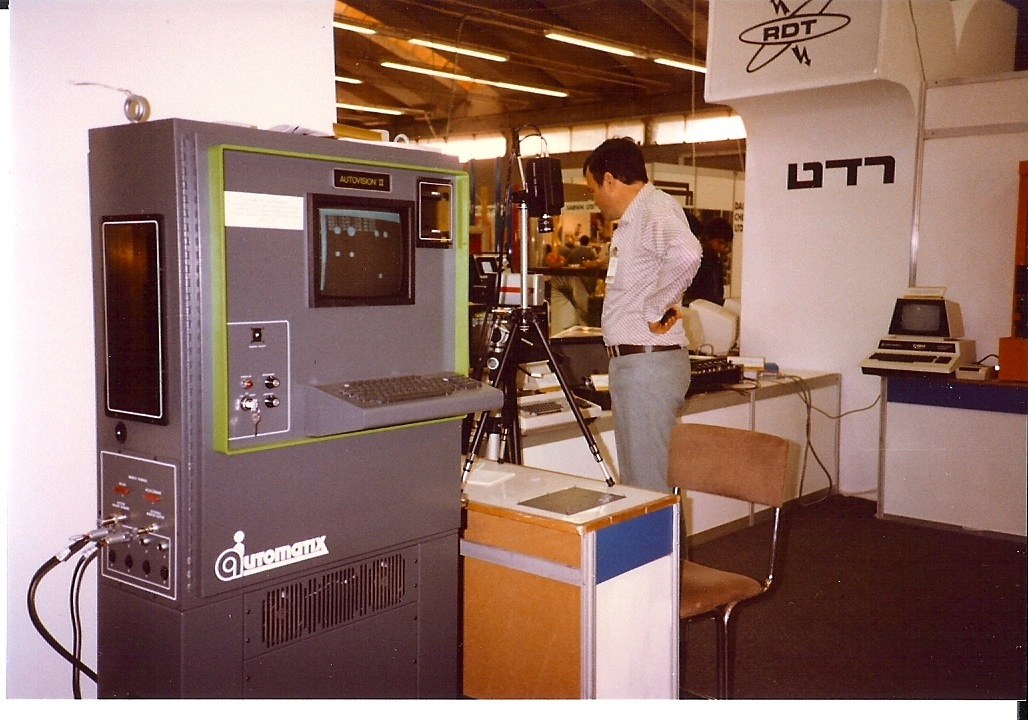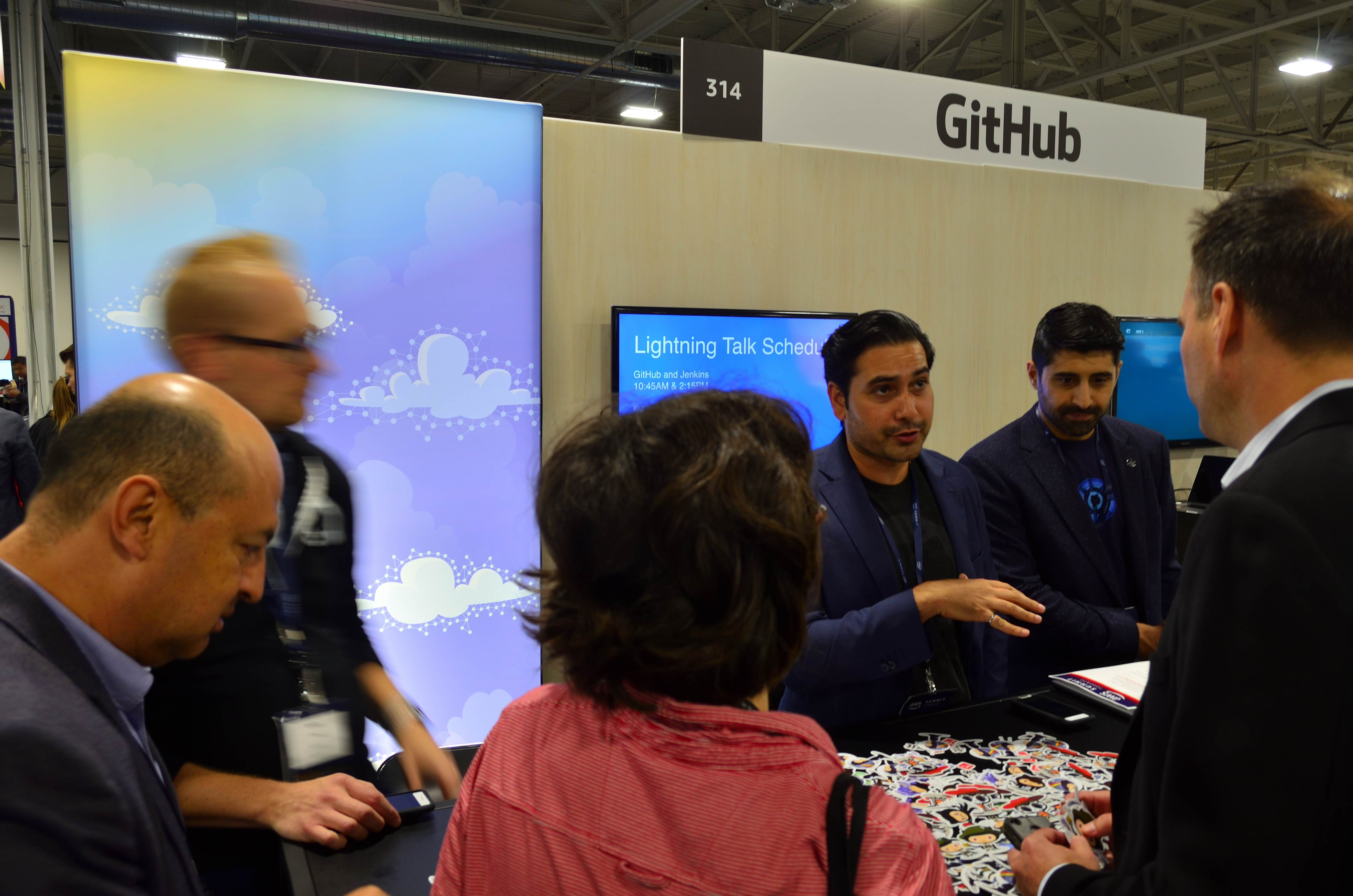|
Depth Map
In 3D computer graphics and computer vision, a depth map is an image or image channel that contains information relating to the distance of the surfaces of scene objects from a viewpoint. The term is related (and may be analogous) to ''depth buffer'', ''Z-buffer'', '' Z-buffering'', and ''Z-depth''. tp://ftp.futurenet.co.uk/pub/arts/Glossary.pdf Computer Arts / 3D World Glossary Document retrieved 26 January 2011. The "Z" in these latter terms relates to a convention that the central axis of view of a camera is in the direction of the camera's Z axis, and not to the absolute Z axis of a scene. Examples File:Cubic Structure.jpg, Cubic Structure File:Cubic Frame Stucture and Floor Depth Map.jpg, Depth Map: Nearer is darker File:Cubic Structure and Floor Depth Map with Front and Back Delimitation.jpg, Depth Map: Nearer the Focal Plane is darker Two different depth maps can be seen here, together with the original model from which they are derived. The first depth map shows l ... [...More Info...] [...Related Items...] OR: [Wikipedia] [Google] [Baidu] |
3D Computer Graphics
3D computer graphics, or “3D graphics,” sometimes called CGI, 3D-CGI or three-dimensional computer graphics are graphics that use a three-dimensional representation of geometric data (often Cartesian) that is stored in the computer for the purposes of performing calculations and rendering digital images, usually 2D images but sometimes 3D images. The resulting images may be stored for viewing later (possibly as an animation) or displayed in real time. 3D computer graphics, contrary to what the name suggests, are most often displayed on two-dimensional displays. Unlike 3D film and similar techniques, the result is two-dimensional, without visual depth. More often, 3D graphics are being displayed on 3D displays, like in virtual reality systems. 3D graphics stand in contrast to 2D computer graphics which typically use completely different methods and formats for creation and rendering. 3D computer graphics rely on many of the same algorithms as 2D computer vector gr ... [...More Info...] [...Related Items...] OR: [Wikipedia] [Google] [Baidu] |
Autostereogram
An autostereogram is a two-dimensional (2D) image that can create the optical illusion of a three-dimensional (3D) scene. Autostereograms use only one image to accomplish the effect while normal stereograms require two. The 3D scene in an autostereogram is often unrecognizable until it is viewed properly, unlike typical stereograms. Viewing any kind of stereogram properly may cause the viewer to experience vergence-accommodation conflict. The optical illusion of an autostereogram is one of depth perception and involves stereopsis: depth perception arising from the different perspective each eye has of a three-dimensional scene, called binocular parallax. Individuals with disordered binocular vision and who cannot perceive depth may require a wiggle stereogram to achieve a similar effect. The simplest type of autostereogram consists of a horizontally repeating pattern with small changes throughout that looks like wallpaper. When viewed with proper vergence, the repeating ... [...More Info...] [...Related Items...] OR: [Wikipedia] [Google] [Baidu] |
Structured Light
A structured light pattern designed for surface inspection An Automatix Seamtracker arc welding robot equipped with a camera and structured laser light source, enabling the robot to follow a welding seam automatically Structured light is the process of projecting a known pattern (often grids or horizontal bars) on to a scene. The way that these deform when striking surfaces allows vision systems to calculate the depth and surface information of the objects in the scene, as used in structured light 3D scanners. ''Invisible'' (or ''imperceptible'') structured light uses structured light without interfering with other computer vision tasks for which the projected pattern will be confusing. Example methods include the use of infrared light or of extremely high frame rates alternating between two exact opposite patterns. Structured light is used by a number of police forces for the purpose of photographing fingerprints in a 3D scene. Where previously they would use tape to extract ... [...More Info...] [...Related Items...] OR: [Wikipedia] [Google] [Baidu] |
Range Imaging
Range imaging is the name for a collection of techniques that are used to produce a 2D image showing the distance to points in a scene from a specific point, normally associated with some type of sensor device. The resulting range image has pixel values that correspond to the distance. If the sensor that is used to produce the range image is properly calibrated the pixel values can be given directly in physical units, such as meters. Types of range cameras The sensor device that is used for producing the range image is sometimes referred to as a ''range camera'' or ''depth camera''. Range cameras can operate according to a number of different techniques, some of which are presented here. Stereo triangulation Stereo triangulation is an application of stereophotogrammetry where the depth data of the pixels are determined from data acquired using a stereo or multiple-camera setup system. This way it is possible to determine the depth to points in the scene, for example, from ... [...More Info...] [...Related Items...] OR: [Wikipedia] [Google] [Baidu] |
Painter's Algorithm
The painter’s algorithm (also depth-sort algorithm and priority fill) is an algorithm for visible surface determination in 3D computer graphics that works on a polygon-by-polygon basis rather than a pixel-by-pixel, row by row, or area by area basis of other Hidden Surface Removal algorithms. The painter’s algorithm creates images by sorting the polygons within the image by their depth and placing each polygon in order from the farthest to the closest object. The painter's algorithm was initially proposed as a basic method to address the Hidden-surface determination problem by Martin Newell, Richard Newell, and Tom Sancha in 1972, while all three were working at CADCentre. The name "painter's algorithm" refers to the technique employed by many painters where they begin by painting distant parts of a scene before parts that are nearer, thereby covering some areas of distant parts. Similarly, the painter's algorithm sorts all the polygons in a scene by their depth and then ... [...More Info...] [...Related Items...] OR: [Wikipedia] [Google] [Baidu] |
2D-plus-depth
2D-plus-Depth is a stereoscopic video coding format that is used for 3D displays, such as Philips WOWvx. Philips discontinued work on the WOWvx line in 2009, citing "current market developments". Currently, this Philips technology is used by SeeCubic company, led by former key 3D engineers and scientists of Philips. They offer autostereoscopic 3D displays which use the 2D-plus-Depth format for 3D video input. Overview The 2D-plus-Depth format is described in a Philips' white paper and articles. Each 2D image frame is supplemented with a greyscale depth map which indicates if a specific pixel in the 2D image needs to be shown in front of the display (white) or behind the screen plane (black). The 256 greyscales can build a smooth gradient of depth within the image. Processing within the monitor used this input to render the multiview images. Supported by various companies across the display industry, 2D-plus-Depth has been standardized in MPEG as an extension for 3D filed un ... [...More Info...] [...Related Items...] OR: [Wikipedia] [Google] [Baidu] |
Machine Vision
Machine vision (MV) is the technology and methods used to provide imaging-based automatic inspection and analysis for such applications as automatic inspection, process control, and robot guidance, usually in industry. Machine vision refers to many technologies, software and hardware products, integrated systems, actions, methods and expertise. Machine vision as a systems engineering discipline can be considered distinct from computer vision, a form of computer science. It attempts to integrate existing technologies in new ways and apply them to solve real world problems. The term is the prevalent one for these functions in industrial automation environments but is also used for these functions in other environment vehicle guidance. The overall machine vision process includes planning the details of the requirements and project, and then creating a solution. During run-time, the process starts with imaging, followed by automated analysis of the image and extraction of the requir ... [...More Info...] [...Related Items...] OR: [Wikipedia] [Google] [Baidu] |
3D Reconstruction From Multiple Images
3D reconstruction from multiple images is the creation of three-dimensional models from a set of images. It is the reverse process of obtaining 2D images from 3D scenes. The essence of an image is a projection from a 3D scene onto a 2D plane, during which process the depth is lost. The 3D point corresponding to a specific image point is constrained to be on the line of sight. From a single image, it is impossible to determine which point on this line corresponds to the image point. If two images are available, then the position of a 3D point can be found as the intersection of the two projection rays. This process is referred to as triangulation (computer vision), triangulation. The key for this process is the relations between multiple views which convey the information that corresponding sets of points must contain some structure and that this structure is related to the poses and the calibration of the camera. In recent decades, there is an important demand for 3D conten ... [...More Info...] [...Related Items...] OR: [Wikipedia] [Google] [Baidu] |
3D Scanner
3D scanning is the process of analyzing a real-world object or environment to collect data on its shape and possibly its appearance (e.g. color). The collected data can then be used to construct digital 3D models. A 3D scanner can be based on many different technologies, each with its own limitations, advantages and costs. Many limitations in the kind of objects that can be digitised are still present. For example, optical technology may encounter many difficulties with dark, shiny, reflective or transparent objects. For example, industrial computed tomography scanning, structured-light 3D scanners, LiDAR and Time Of Flight 3D Scanners can be used to construct digital 3D models, without destructive testing. Collected 3D data is useful for a wide variety of applications. These devices are used extensively by the entertainment industry in the production of movies and video games, including virtual reality. Other common applications of this technology include augmented reality, ... [...More Info...] [...Related Items...] OR: [Wikipedia] [Google] [Baidu] |
GitHub
GitHub, Inc. () is an Internet hosting service for software development and version control using Git. It provides the distributed version control of Git plus access control, bug tracking, software feature requests, task management, continuous integration, and wikis for every project. Headquartered in California, it has been a subsidiary of Microsoft since 2018. It is commonly used to host open source software development projects. As of June 2022, GitHub reported having over 83 million developers and more than 200 million repositories, including at least 28 million public repositories. It is the largest source code host . History GitHub.com Development of the GitHub.com platform began on October 19, 2007. The site was launched in April 2008 by Tom Preston-Werner, Chris Wanstrath, P. J. Hyett and Scott Chacon after it had been made available for a few months prior as a beta release. GitHub has an annual keynote called GitHub Universe. Org ... [...More Info...] [...Related Items...] OR: [Wikipedia] [Google] [Baidu] |
3D Reconstruction
In computer vision and computer graphics, 3D reconstruction is the process of capturing the shape and appearance of real objects. This process can be accomplished either by active or passive methods. If the model is allowed to change its shape in time, this is referred to as non-rigid or spatio-temporal reconstruction. Motivation and applications The research of 3D reconstruction has always been a difficult goal. By Using 3D reconstruction one can determine any object's 3D profile, as well as knowing the 3D coordinate of any point on the profile. The 3D reconstruction of objects is a generally scientific problem and core technology of a wide variety of fields, such as Computer Aided Geometric Design ( CAGD), computer graphics, computer animation, computer vision, medical imaging, computational science, virtual reality, digital media, etc. For instance, the lesion information of the patients can be presented in 3D on the computer, which offers a new and accurate approach in d ... [...More Info...] [...Related Items...] OR: [Wikipedia] [Google] [Baidu] |







